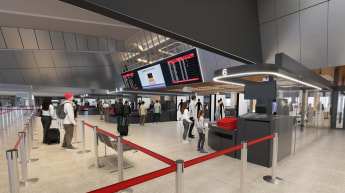Airlines in Oceania are projected to purchase 1,000 new aircraft over the next 20 years as new routes are established linking the region to Asia and beyond.
The bulk of those orders from carriers such as Air New Zealand, Qantas and Virgin Australia, among others, were projected to be single-aisle aircraft such as the Boeing 737 or Airbus A320, while small twin-aisles were tipped to play an important role in air travel.
The fleets of Oceania-based airlines was expected to grow from 540 in 2013 to 1,010 by 2033, suggesting about half of all new orders would be used for growth and half for replacement.
The forecasts were contained in Boeing’s annual current market outlook, which projects demand for aircraft 20 years out.
Boeing Commercial Airplanes managing director for market analysis James Billing says Oceania was an area that “punched above its weight” in terms of air travel given the relatively small population.
“There is a lot of travel here and it takes a lot of airplanes to serve these markets,” Billing told reporters in Sydney on Friday.
The 2014-2033 forecast of 1,000 new aircraft orders for Oceania was down slightly from the 1,010 forecast for the region in Boeing’s 2013-2032 Current Market Outlook.
Billing said the next generation of smaller twin-aisle aircraft such as the Boeing 787 would play an important role in Oceania to profitably establish new point-to-point routes.
“It is going to create the opportunity for airlines to profitably serve those markets,” Billing said.
“Not everyone will be successful but there will be a lot of successes because people do pay for convenience.”
Globally, airlines were expected to purchase 36,770 new aircraft between 2014 and 2033, worth US$5.2 trillion at list prices.
Some 58 per cent of all purchases, or 21,270 aircraft, would be for growth, while 15,500 were expected to replace older aircraft. There were 5,410 aircraft retirements expected over the next 20 years.
The projections estimate the global airline fleet would increase to 42,180 by 2033, from 20,910 in 2013, on the back of a five per cent annual increase in passengers.
Asia-Pacific carriers were expected to take the bulk of new aircraft orders, with 13,460 orders worth US$2.02 billion representing 37 per cent of all orders.
Asia was generating 100 million new passengers per year, Boeing said, with many of those new travellers likely to present growing demand for travel to Oceania.
“Now, with all the Asia-Pacific growth, most of the traffic up there to date has been domestic. It is a natural starting point,” Billing said.
“But as the population continues to get wealthier and get more accustomed to air travel you are going to see ever increasing numbers of people who live up in Asia wanting to come down here to visit and I think it is already happening and is going to keep on happening probably at an increasing rate.”
In Oceania, and indeed globally, most of the new aircraft orders were for single-aisle aircraft used predominantly for short routes.
“Short-haul is not a luxury good. Short-haul travel is basic infrastructure,” Billing said.
“You can’t do business or conduct most of your normal daily affairs in places like Asia without airplanes because it is vast and there’s no roads to speak of.”
The full Boeing Current Market Outlook can be found here.















